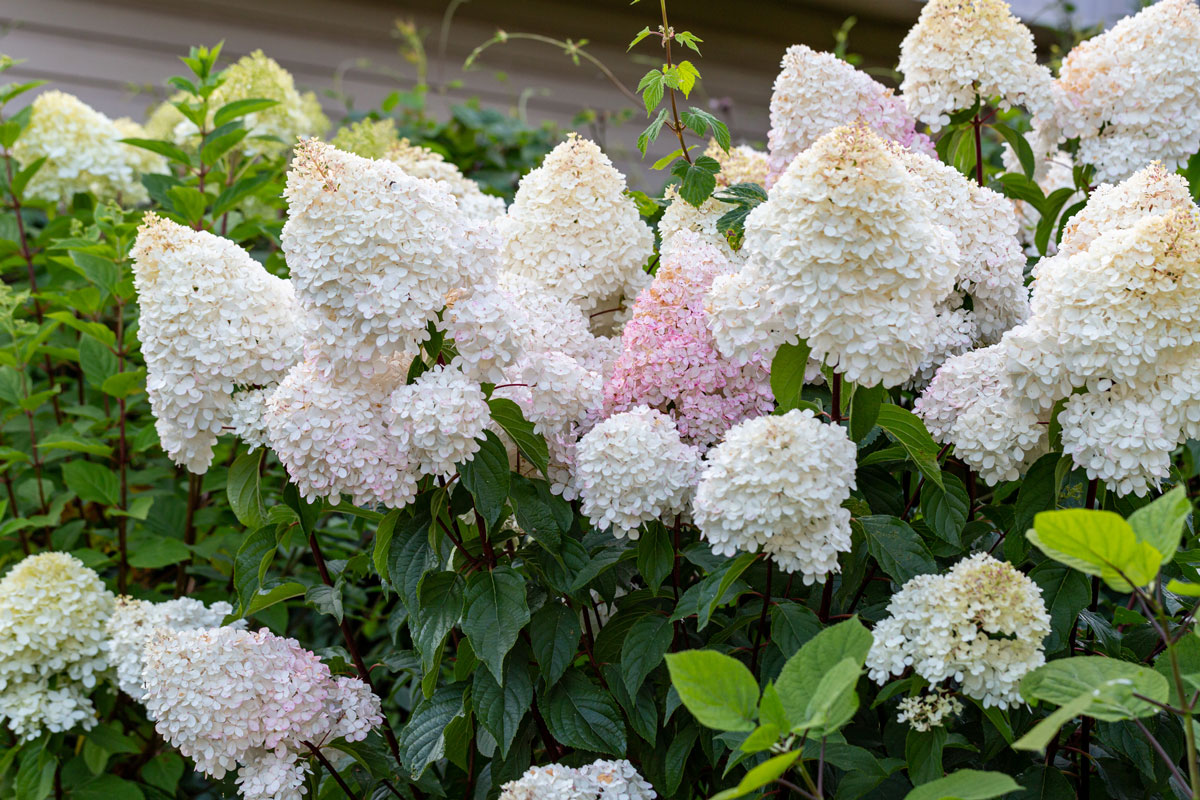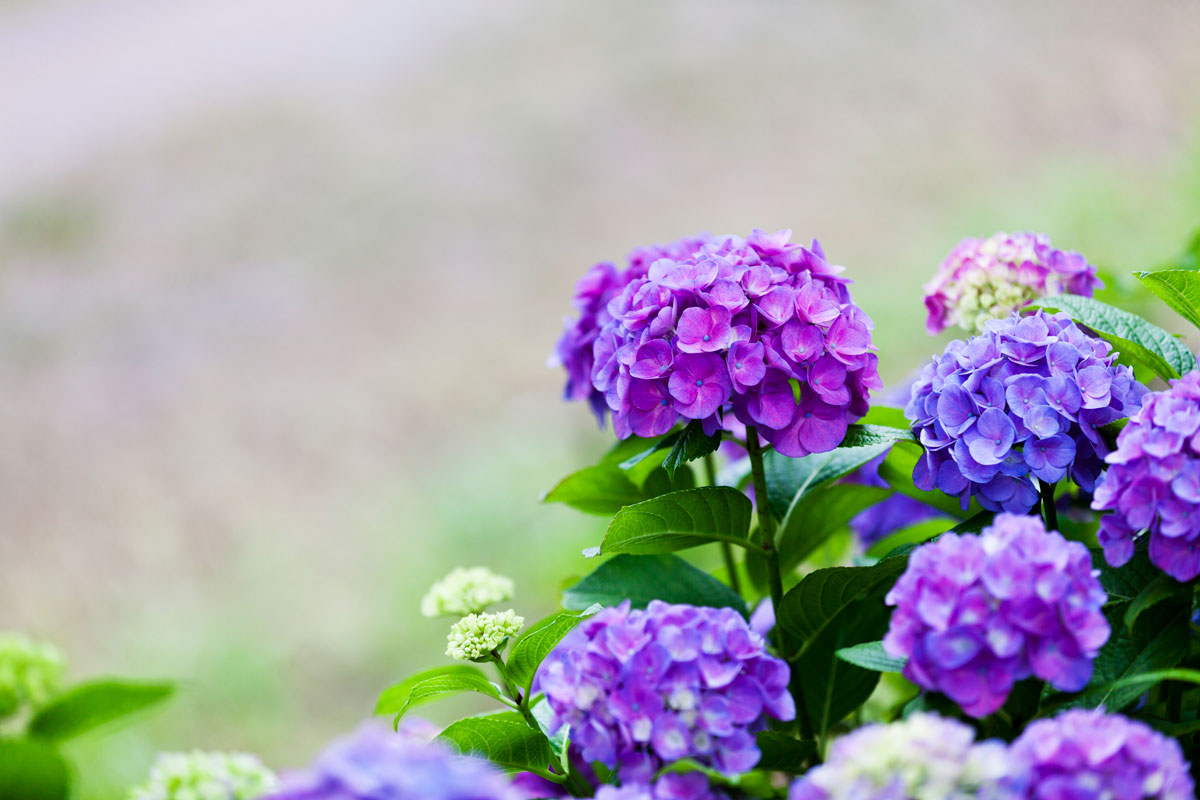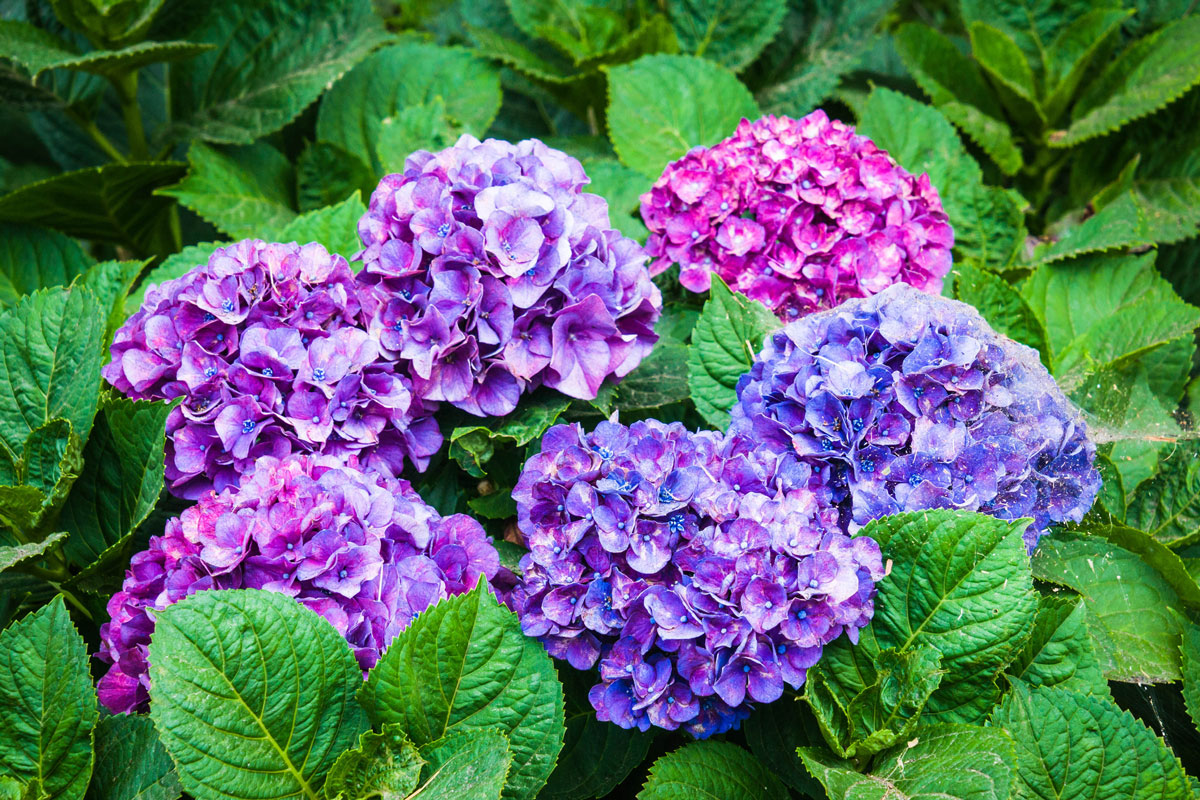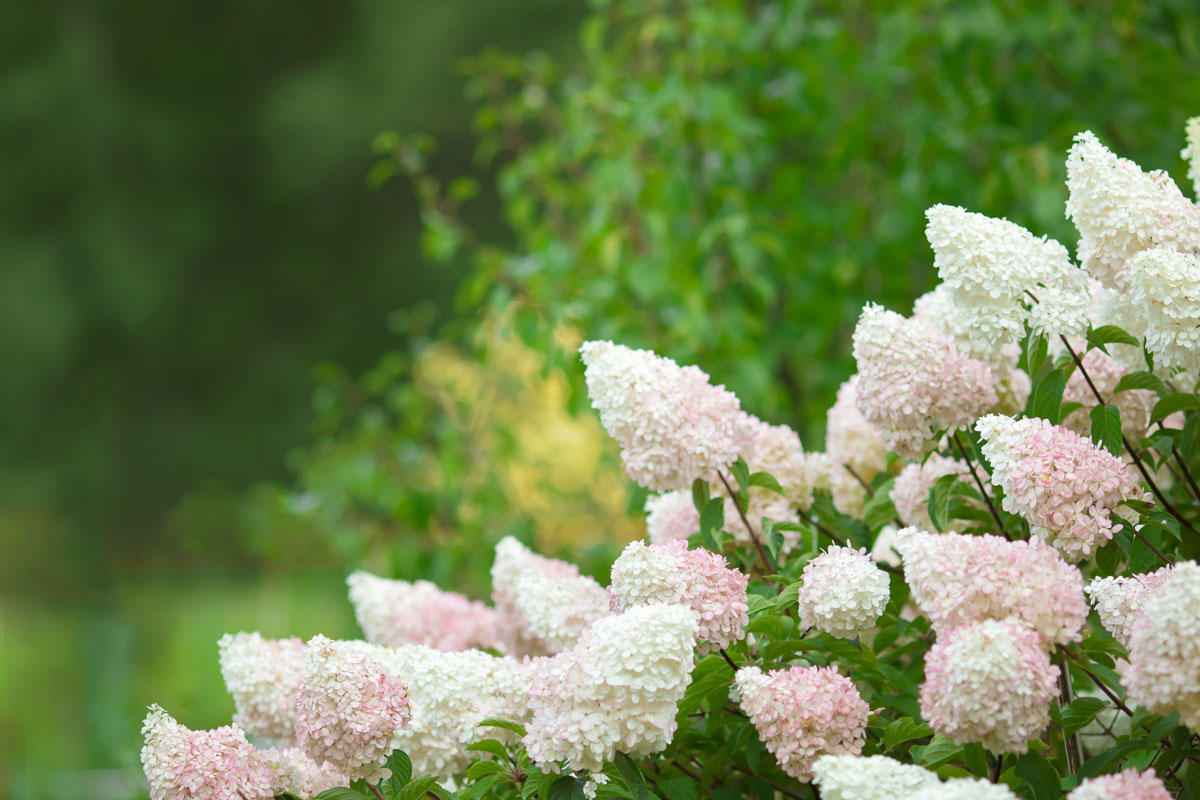Finding new flowers to plant in your garden can be daunting without the correct information. Do you want to try growing hydrangeas but have no idea how long they will take to bloom? Do you have to wait years to see a single flower? Luckily, we have the answers and will share them below.
Typically, a hydrangea will bloom within its first or second year. Of course, this can depend on how your plant settles into the ground, so every hydrangea is different.
On the other hand, it's also possible for a newer hydrangea to bloom in year one and then not for a year or two. Again, it's in the hands of mother nature.
As we begin, we will cover all things hydrangeas and discuss when you can expect yours to bloom. Whether this is your flower's first spring in the ground or you've been waiting, we're here to help. With that said, let's explore this topic!

Will A Hydrangea Bloom Its First Year?
Yes, it is pretty common for a newer hydrangea to bloom. Considering that most hydrangea varieties flower their first year in the ground, it's a safe assumption that yours will too.
However, that's not to say a hydrangea will always produce flowers right when spring hits. As we said, some hydrangeas prefer to establish themselves in the ground for a year or two and then create beautiful flowers.
According to Cornell Cooperative Extension, most woody plants won't bloom their first year after being planted or relocated, which applies to hydrangeas.
Moreover, it's possible to see minor flowering in year one and then no flowers for years two and three. Don't let this discourage you, though, as it's not always the same for everyone.
Weather, soil quality, and overall upkeep can help aid a hydrangea to bloom, so when in doubt, show your shrub some love!

Why Won't My Hydrangea Bloom?
For those with established or even new hydrangeas that won't bloom, this is for a few reasons. In general, hydrangeas will have trouble flowering if:
- You prune them incorrectly/too often
- The winter is extreme, and the spring hits late
- There are improper growing conditions
- You overfertilize your plant
In addition, it's also possible that your flower is too young to bloom in its first year. Since hydrangea is a woody plant, trimming its branches too far back can have adverse effects.
For example, if you over-prune a hydrangea right before winter, it could have trouble coming back in the early to later spring.
Weather conditions also play a significant role here. So if you have an unusually cold season, it's likely your flower won't immediately come back to life and bloom once the weather warms up.
Too much fertilizer can also stun a hydrangea, which will cause a lack of flowering. Even though giving your shrub a boost of nutrients can seem helpful, doing this excessively can hurt its root system.
Remember, hydrangea varieties can bloom on old and new wood, so they're hardier than you think.
How Do I Get My Hydrangeas To Bloom?
If you are tired of waiting, there are some natural ways to encourage a hydrangea to bloom. First (and most importantly), you want to keep your year-end pruning very light.
One of the common mistakes gardeners make with hydrangeas is over-pruning them in the later fall before winter hits. Although removing the ends of your flower's branches may seem beneficial, you may be killing potential buds for next season.
Fun fact: hydrangeas form many of their future blooms during the previous year. That means if you go crazy with a pair of gardening shears, you could prevent your shrub from producing any flowers in the springtime.
The next thing to do if you want to see more flowers is to fertilize. Even though we warned about overdoing this above, adding a bit of fertilizer around your hydrangea can be life-changing for its appearance.
Specifically, when you notice greenery around the base of its wooden branches, you should add a balanced, liquid, or granular plant food before the spring/summer growing seasons.
Furthermore, it's vital to water hydrangeas routinely, just not too much.
Like most flowering shrubs, hydrangeas prefer moist growing conditions, so a weekly watering won't hurt. If it's hot out, you may want to up your watering schedule to twice weekly, so feel around your plant's soil.
Ways To Encourage A Hydrangea To Bloom Tutorial
Here is a helpful guide on getting your hydrangeas to bloom. This video discusses natural ways to encourage blooming on hydrangea and gives other helpful tips for maintaining your flowers.
EZ-Gro Hydrangea Fertilizer
This fertilizer works specifically for hydrangea varieties, has a high-grade liquid formula, reduces soil pH, delivers nitrogen, phosphate, and potassium to the ground, and comes in a 32-ounce bottle.
View this fertilizer on Amazon.
Where Is The Best Place To Grow Hydrangeas?

The best place to grow a hydrangea is somewhere with bright morning sun but more shade toward the afternoon hours. Although this flower species loves sunlight, hydrangea is not super heat tolerant.
Therefore, you want to plant your hydrangea in a partially shaded location. According to Gilmour, you can typically find this type of lighting near the north or south of your house, so that's something to consider.
You also want to ensure your hydrangea gets enough sunlight to keep its soil from waterlogging. As we said, this woody plant enjoys moist soil but needs good drainage to survive.
So if you plant your flower somewhere with mostly shade, you could run into issues with root rot, etc.
Miracle-Gro explains that if you live in the south (Texas, Arizona, California, Nevada), you may want to grow hydrangea in a shadier spot.
On the other hand, if you're in the north (New York, Michigan, Pennsylvania, Maryland, Oregon), hydrangeas will be able to handle full sun.
Generally, the stronger the sun, the less a hydrangea needs, so that's something to remember while choosing the location for your new flowers.
How Much Sun Should Hydrangeas Get?
Depending on where you live, your hydrangea will need different amounts of sun exposure. As we mentioned above, southern states tend to be hotter than those in the north.
For that reason, hydrangea in the south only needs three hours of sunlight each day to grow and bloom, while one in the north needs around six.
However, if your garden has an abundance of sun, wherever you are, planting your hydrangea in partial shade is a good idea. Although this woody plant is hardy, it is also prone to sunburn.
Additionally, there are some varieties of hydrangea that have specific sun needs.
- Oakleaf hydrangeas: 3-6 hours
- Climbing hydrangeas: 4-6 hours
- Smooth hydrangeas: 5-8 hours
- Panicle hydrangeas: 6-10 hours
Again, you may need to adjust your plant's sun exposure depending on your climate, so every plant is unique. It's also important to give your flower enough sunlight, so it can bloom when the spring hits.
The best thing for hydrangea after a cold winter season is sunshine, water, and a little fertilizer.
Can I Grow Hydrangeas Anywhere?

In general, you can grow hydrangea in USDA zones 3-9. That means a large amount of the country is suitable for this flowering shrub, so that's good news for gardeners.
As we said, hydrangeas are somewhat hardy, meaning they don't give up easily. However, you don't want to plant this flower somewhere with too much shade or sunlight.
For example, if you decide to grow hydrangea in Montana, it may not do well if the winters are constantly below freezing. Moreover, if you live in southern Texas and try growing hydrangea in full sun, it will not do well either.
Think of this plant species as a more moderate-leaning one. The milder its conditions, the better it will grow, which also means the more it will flower.
Can I Grow A Hydrangea Inside?
Yes! You can grow hydrangea inside if you're out of their USDA zones. Typically, as long as you have a bright, warm window and give your flower plenty of TLC, it will thrive indoors.
For those wanting to try indoor growing, make sure to keep your plant humid. Ideally, hydrangeas prefer average to high humidity, so feel free to spray one down every few days with water.
Additionally, keep an indoor hydrangea away from drafts and dry, cold air. So if you have an AC vent nearby, make sure to relocate your flower.
It's also crucial to give your hydrangea fertilizer a few times yearly if it's inside. Remember, your plant isn't getting as many natural nutrients as one outdoors, so replenishing those with a high-grade formula can be beneficial.
As we covered earlier, a hydrangea-targeted liquid fertilizer is the best idea.
How Much Water Do Hydrangeas Need?

Ideally, you want to give a hydrangea plant around one inch of water each week. Of course, if it's peak growing season (spring-summer), you may want to up this amount to 1.5 or two inches.
Furthermore, you don't have to drench a hydrangea each time you water. Instead, it's helpful to space watering out over a few days to prevent waterlogged soil or root rot.
It's also a good idea to feel the soil around your flower before watering. Even if it's been a few days, your hydrangea may have plenty of water, so there's no need to add more.
To Finish Up

Whether you have hydrangeas filling your garden or want to plant one, knowing their blooming schedule is crucial. We found that hydrangeas typically flower their first year, but that's not always promised.
Generally, hydrangeas do best with light pruning, so make sure to take it easy in the fall. Moreover, hydrangeas are woody plants that will die off in the winter and come back in the spring.
Regardless, make sure to plant your hydrangea somewhere with bright morning sun, and don't forget to fertilize a few times each year!
Made it to the end? Check out these awesome related posts!

